-
 bitcoin
bitcoin $122288.232522 USD
0.16% -
 ethereum
ethereum $4480.662914 USD
-0.22% -
 xrp
xrp $2.962747 USD
-2.32% -
 tether
tether $1.000120 USD
-0.05% -
 bnb
bnb $1145.654223 USD
-2.07% -
 solana
solana $227.105217 USD
-1.67% -
 usd-coin
usd-coin $0.999548 USD
-0.02% -
 dogecoin
dogecoin $0.250875 USD
-2.04% -
 tron
tron $0.340654 USD
-0.49% -
 cardano
cardano $0.837968 USD
-2.52% -
 hyperliquid
hyperliquid $48.960449 USD
0.06% -
 chainlink
chainlink $22.049280 USD
-1.33% -
 ethena-usde
ethena-usde $1.000404 USD
0.02% -
 sui
sui $3.586212 USD
0.20% -
 avalanche
avalanche $29.894916 USD
-4.18%
What is cloud mining and should you invest in it?
Cloud mining lets users rent hash power to mine crypto without hardware, but risks include scams, hidden fees, and fluctuating profitability—due diligence is key.
Aug 11, 2025 at 05:56 am
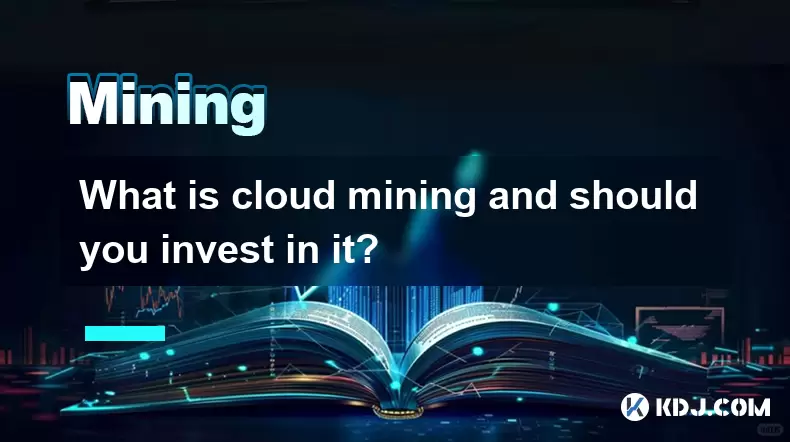
Understanding the Basics of Cloud Mining
Cloud mining refers to the process of mining cryptocurrencies using remote data centers with shared processing power. Instead of purchasing and maintaining physical mining hardware like ASICs or GPUs, users rent computing power from cloud mining providers. These providers operate large-scale mining farms in regions with low electricity costs and optimal cooling conditions. By leasing hash power, individuals can participate in cryptocurrency mining without the technical complexity or upfront hardware investment.
The core idea behind cloud mining is accessibility. It allows users from any geographic location to earn cryptocurrency rewards based on the amount of hash rate they lease. Contracts typically specify the duration, hash rate, and associated fees. For example, a user might purchase a 10 TH/s contract for Bitcoin mining over a 2-year period, with daily payouts distributed in BTC after deducting service and electricity fees.
However, not all cloud mining services operate transparently. Some platforms may lack verifiable proof of infrastructure or overpromise returns. It is essential to verify whether the provider owns actual mining hardware or simply runs a Ponzi-like scheme where new investor funds pay existing users.
How Cloud Mining Works: A Step-by-Step Breakdown
To engage in cloud mining, users must follow several key steps:
- Choose a reputable cloud mining platform such as Genesis Mining, NiceHash, or ECOS. Research the company’s history, user reviews, and transparency about their mining facilities.
- Create an account and verify identity through KYC (Know Your Customer) procedures, which are standard on regulated platforms.
- Select a mining contract based on the cryptocurrency (e.g., Bitcoin, Ethereum Classic), hash rate (e.g., 100 MH/s), and contract length (e.g., 1 year or lifetime).
- Pay for the contract using cryptocurrency (commonly Bitcoin or Ethereum) or sometimes fiat currency, depending on the provider.
- Monitor mining performance through the dashboard, which displays daily hash rate output, estimated earnings, and deducted fees.
- Receive payouts directly to your wallet, usually on a daily basis, minus maintenance and electricity costs.
The mining process itself is fully managed by the provider. They handle hardware deployment, firmware updates, cooling, and repairs. Your role is limited to monitoring performance and managing withdrawals.
Risks Associated with Cloud Mining Investments
While cloud mining appears convenient, it carries substantial risks that potential investors must evaluate.
One major concern is scam operations. Numerous cloud mining platforms have turned out to be fraudulent, offering contracts for non-existent hardware. Red flags include guaranteed high returns, lack of physical address, and absence of real-time mining data. Platforms that promise returns significantly above market averages should be treated with extreme caution.
Another risk involves contract profitability. Cryptocurrency mining profitability depends on multiple fluctuating factors: coin price, network difficulty, and electricity costs. Even with a legitimate provider, a drop in Bitcoin’s price or a spike in mining difficulty can render a contract unprofitable. Users often overlook these variables when calculating return on investment.
Additionally, hidden fees can erode earnings. Most providers charge daily maintenance fees to cover electricity and operations. These fees are deducted before payout, and if mining revenue falls below the fee threshold, the user may receive nothing or even go into negative balance.
Contract termination is another issue. Some providers reserve the right to terminate contracts if mining becomes unprofitable from their perspective, leaving users without recourse.
Comparing Cloud Mining to Traditional Mining
Traditional mining requires purchasing and managing physical hardware. This approach offers full control over the mining operation, including the choice of mining pool, firmware optimization, and direct access to earnings.
In contrast, cloud mining removes hardware responsibilities but also removes control. You cannot upgrade or relocate the hardware, nor can you verify its actual performance independently. While traditional mining involves high initial costs and technical knowledge, cloud mining lowers the entry barrier but introduces counterparty risk — the risk that the provider fails to deliver as promised.
Energy costs play a pivotal role. In traditional mining, electricity is the largest ongoing expense. Cloud mining providers benefit from industrial-scale energy contracts, which may offer better efficiency. However, these savings are not always passed on to users.
Hardware obsolescence is another consideration. Mining equipment depreciates quickly as newer models emerge. With traditional mining, owners can resell or repurpose hardware. In cloud mining, leased hash power becomes obsolete without compensation.
How to Evaluate a Legitimate Cloud Mining Provider
To avoid scams, conduct thorough due diligence before investing.
- Verify data center locations. Legitimate companies publish information about their mining farms, including photos, videos, and facility tours. Look for evidence of real infrastructure.
- Check third-party reviews on platforms like Trustpilot, Reddit, and Bitcoin forums. Pay attention to consistent complaints about delayed payouts or unresponsive support.
- Analyze fee structure. Transparent providers clearly outline maintenance fees, withdrawal thresholds, and payment schedules. Avoid platforms that charge excessive or unclear fees.
- Review contract terms. Ensure the contract specifies hash rate, duration, and conditions for termination. Avoid lifetime contracts without clear sustainability plans.
- Test customer support. Send inquiries about technical details or contract modifications. Responsive and knowledgeable support indicates professionalism.
Platforms like ECOS offer on-site mining tours and real-time monitoring, adding a layer of trust. Others like NiceHash operate as marketplaces, allowing users to buy hash power from verified sellers, introducing a peer-review mechanism.
Frequently Asked Questions
Is cloud mining profitable in 2024?Profitability depends on current cryptocurrency prices, network difficulty, and contract costs. Use online mining calculators to estimate returns based on hash rate, electricity fees, and market conditions. Most short-term contracts break even only if the coin price appreciates.
Can I mine any cryptocurrency through cloud mining?Most providers focus on Bitcoin (SHA-256) and Ethereum Classic (Ethash). Some support Litecoin (Scrypt) or Ravencoin. Availability depends on the provider’s hardware and market demand.
What happens if the cloud mining company shuts down?If the company ceases operations, your contract becomes void. You lose future earnings and have no claim over the physical hardware. Choose providers with long operational histories and legal registration.
Are there tax implications for cloud mining income?Yes. Earnings from cloud mining are generally treated as taxable income in most jurisdictions. Keep records of payouts and fees for accurate reporting. Consult a tax professional familiar with cryptocurrency regulations.
Disclaimer:info@kdj.com
The information provided is not trading advice. kdj.com does not assume any responsibility for any investments made based on the information provided in this article. Cryptocurrencies are highly volatile and it is highly recommended that you invest with caution after thorough research!
If you believe that the content used on this website infringes your copyright, please contact us immediately (info@kdj.com) and we will delete it promptly.
- BlockDAG, DOGE, HYPE Sponsorship: Crypto Trends Shaping 2025
- 2025-10-01 00:25:13
- Deutsche Börse and Circle: A StableCoin Adoption Powerhouse in Europe
- 2025-10-01 00:25:13
- BlockDAG's Presale Buzz: Is It the Crypto to Watch in October 2025?
- 2025-10-01 00:30:13
- Bitcoin, Crypto, and IQ: When Genius Meets Digital Gold?
- 2025-10-01 00:30:13
- Stablecoins, American Innovation, and Wallet Tokens: The Next Frontier
- 2025-10-01 00:35:12
- NBU, Coins, and Crypto in Ukraine: A New Yorker's Take
- 2025-10-01 00:45:14
Related knowledge
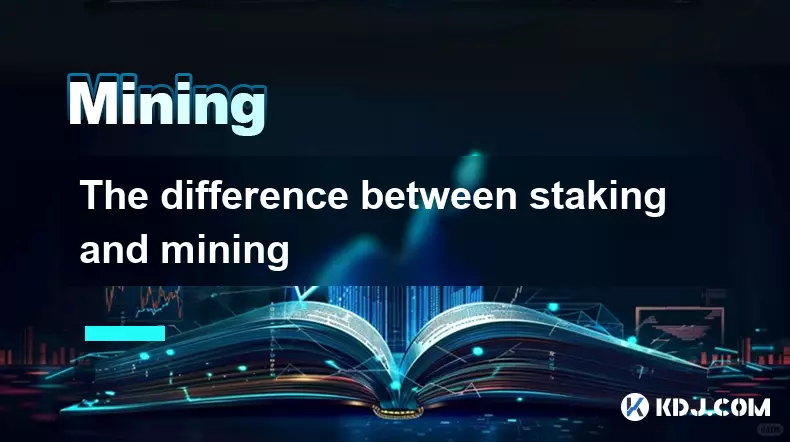
The difference between staking and mining
Sep 24,2025 at 05:18am
Understanding Staking in the Cryptocurrency Ecosystem1. Staking involves holding funds in a cryptocurrency wallet to support the operations of a block...
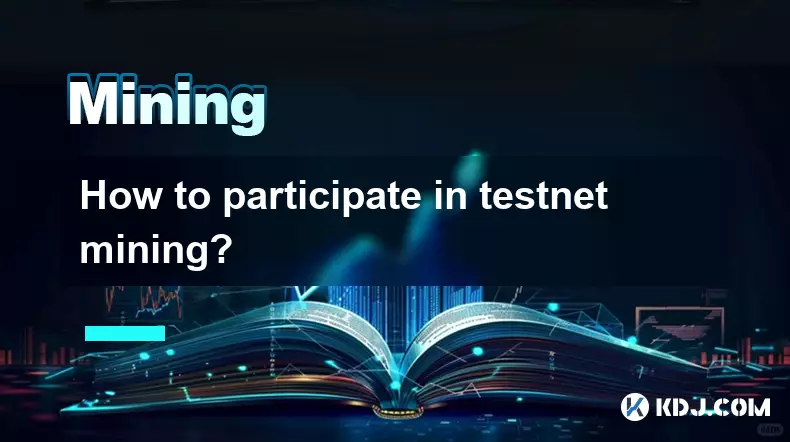
How to participate in testnet mining?
Sep 22,2025 at 09:18am
Understanding Testnet Mining in the Crypto Ecosystem1. Testnet mining is a method used by blockchain developers to simulate real-world conditions on a...

How to dispose of abandoned mining machines?
Sep 19,2025 at 08:19pm
Assessing the Condition of Abandoned Mining Rigs1. Begin by inspecting each mining machine for visible damage, corrosion, or missing components. Machi...

How to identify high-quality mining pools?
Sep 21,2025 at 03:19pm
Reputation and Track Record1. A mining pool’s reputation is built over time through consistent performance and transparency. Pools that have operated ...
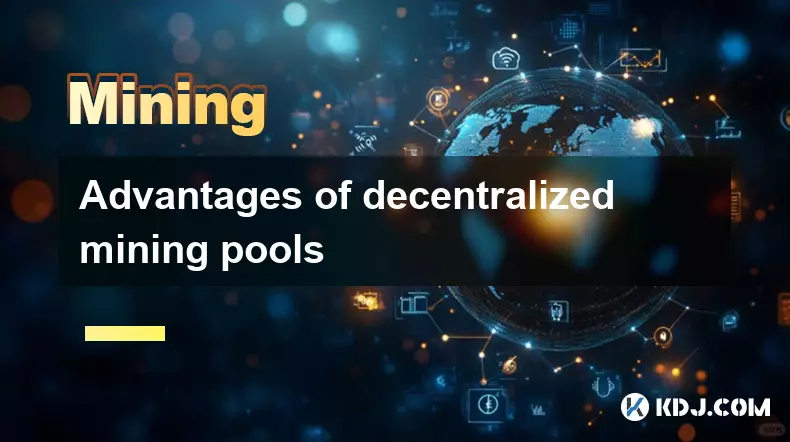
Advantages of decentralized mining pools
Sep 20,2025 at 04:36pm
Enhanced Security and Resistance to Censorship1. Decentralized mining pools operate on blockchain-based smart contracts, eliminating the need for a ce...
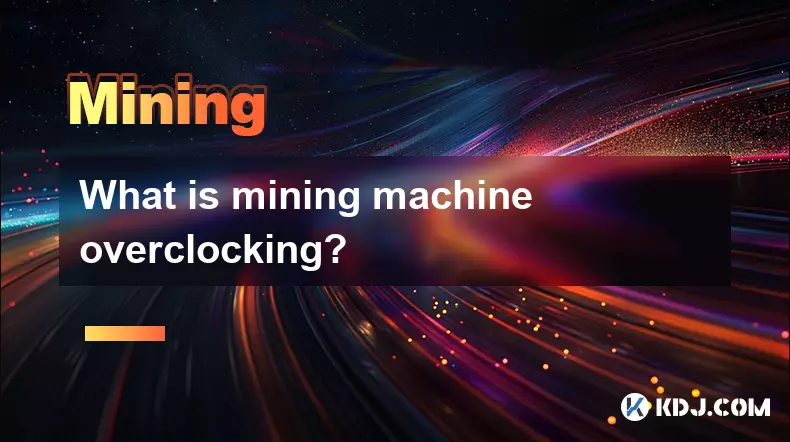
What is mining machine overclocking?
Sep 21,2025 at 07:19pm
Understanding Mining Machine Overclocking1. Mining machine overclocking refers to the process of increasing the operating frequency of a cryptocurrenc...

The difference between staking and mining
Sep 24,2025 at 05:18am
Understanding Staking in the Cryptocurrency Ecosystem1. Staking involves holding funds in a cryptocurrency wallet to support the operations of a block...

How to participate in testnet mining?
Sep 22,2025 at 09:18am
Understanding Testnet Mining in the Crypto Ecosystem1. Testnet mining is a method used by blockchain developers to simulate real-world conditions on a...

How to dispose of abandoned mining machines?
Sep 19,2025 at 08:19pm
Assessing the Condition of Abandoned Mining Rigs1. Begin by inspecting each mining machine for visible damage, corrosion, or missing components. Machi...

How to identify high-quality mining pools?
Sep 21,2025 at 03:19pm
Reputation and Track Record1. A mining pool’s reputation is built over time through consistent performance and transparency. Pools that have operated ...

Advantages of decentralized mining pools
Sep 20,2025 at 04:36pm
Enhanced Security and Resistance to Censorship1. Decentralized mining pools operate on blockchain-based smart contracts, eliminating the need for a ce...

What is mining machine overclocking?
Sep 21,2025 at 07:19pm
Understanding Mining Machine Overclocking1. Mining machine overclocking refers to the process of increasing the operating frequency of a cryptocurrenc...
See all articles










































































